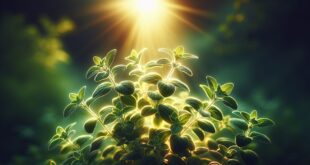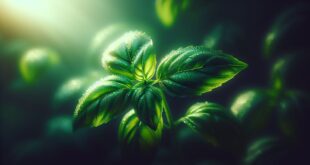 In the chronicles of time, ancient civilizations held secrets not merely etched in stone but whispered through the rustling leaves of the herbal world. These societies viewed nature as an ally, weaving their understanding of plants into the very fabric of daily life. Imagine warriors of yore stepping onto the battlefield, not just with swords but with an arsenal of herbal stamina and resilience derived from the land’s bounty. Adaptogens—plants known for their ability to help the body resist stress—formed a cornerstone of this knowledge.
In the chronicles of time, ancient civilizations held secrets not merely etched in stone but whispered through the rustling leaves of the herbal world. These societies viewed nature as an ally, weaving their understanding of plants into the very fabric of daily life. Imagine warriors of yore stepping onto the battlefield, not just with swords but with an arsenal of herbal stamina and resilience derived from the land’s bounty. Adaptogens—plants known for their ability to help the body resist stress—formed a cornerstone of this knowledge.
Traditional healers in cultures like the Greeks, Romans, and Chinese weren’t just herbalists; they were gatekeepers to vitality. Their libraries of scrolls and parchments detailed remedies passed down through generations, teaching that the earth beneath our feet offers remedies for strength, endurance, and healing. It’s an echo of what George Harrison once noted, “It’s being here now that’s important. There’s no past and there’s no future. Time is a very misleading thing.” And indeed, these healers were attuned to the timelessness of nature’s gifts.
Consider the Ayurvedic scripts from India or Traditional Chinese Medicine, which delved deeply into the symbiotic relationship between humans and herbs. Their recipes and brews were less about quick fixes and more about sustainable, holistic wellness—a philosophy of warrior nutrition that nourished the body and spirit. Herbs like Rhodiola rosea and Siberian ginseng were revered for boosting endurance and fighting fatigue, assisting warriors to stay battle-ready.
Yet, there’s more than just surviving the physical trials. Healing is a continuum, resonant with the cycles of the moon and the turning of the seasons, where each plant plays its part. Just like the oak offers strength and the willow flexibility, adaptogens provide nuanced support—balancing, invigorating, and calming as needed.
Isn’t it fascinating how, thousands of years later, these ancient whispers now resonate with modern science? Research from the National Institutes of Health delves into the biochemical pathways adaptogens impact, affirming what these early cultures knew intuitively. This ancient wisdom, though grounded in old-world practices, demonstrates a broader truth: nature provides a symphony of assistance—we just need to tune in. And thus, the warrior within us—whether engaging with the external world or the inner battles—remains equipped with the gentlest yet potent of allies that are the plants themselves.
adaptogens in traditional warrior cultures
Warriors have always been a breed apart, driven by an unyielding commitment to their mission and aided by an arsenal not limited to weapons. Imagine the Spartans, renowned not just for their fighting skills but their profound understanding of “warrior nutrition,” crafting their endurance from the earth’s own botanicals. These plants, known now as adaptogens, were their secret allies, offering a reservoir of herbal stamina indispensable on the battlefield.
Consider the Valkyries of Norse legend, believed to possess concoctions made from wild herbs that prepared warriors for both physical combat and spiritual journeys. Their ceremonies, brimming with reverence and intention, paid homage to these botanicals, blending earthly resilience with celestial wisdom. Was there a deeper purpose at work? A belief that fortified the body and spirit for battles seen and unseen?
In the steppes of Mongolia, Genghis Khan’s armies drank brews containing Rhodiola rosea. This adaptogen was their ally against harsh conditions, offering not only stamina but emotional clarity. As anyone who has braved the elements knows, survival is about adapting as much as it is about conquering. These ancient warriors understood that true power lay not in brute strength alone but in a balanced body and mind — a symbiotic relationship fostered by nature itself.
Let’s not forget the fighting monks of Shaolin, whose rigorous training was complemented by roots and fungi that sustained their energy and sharpened their focus. Reishi mushrooms, with their immune-boosting properties, were as revered as any martial technique. For them, the merging of physical prowess with spiritual tranquility was not just ideal but essential.
Think of it this way: a warrior’s journey wasn’t just a march across terrains or through ranks of foes—it was a passage through life, ripe with moments demanding endurance, reflection, and adaptation. This philosophy, while grounded in ancient practice, still beckons us today, urging us to reconnect with the natural world and harness its timeless gifts.
Is it any wonder that we, too, seek these ancient adaptogens not just for their healing powers but for a semblance of the same unity and strength—the same indefinable balance? As Marcus Aurelius once said, “Everything is connected, and the web is holy.” Adaptogens serve as a reminder of how interconnected we are with nature and our history—a whisper from the past that echoes through the very cells of our being.
In revisiting these traditions, we partake in the warrior’s journey ourselves, a humble reminder that, at times, learning from those who came before us is the most natural way forward. It’s about embracing the cycle, where the past finds new life in the present and future, a dance as eternal as the stars above.
modern science and historical insights
 Modern science has unraveled many of the mysteries that ancient cultures intuitively understood. Today, these time-honored practices are under the scrutiny of scientific investigation, shedding light on the biochemical marvels behind adaptogens, which have long fortified warriors of every kind. Indeed, science is catching up with what the ancient healers already knew—these plants offer more than just a defense against fatigue; they act as a bridge between physical endurance and mental resilience.
Modern science has unraveled many of the mysteries that ancient cultures intuitively understood. Today, these time-honored practices are under the scrutiny of scientific investigation, shedding light on the biochemical marvels behind adaptogens, which have long fortified warriors of every kind. Indeed, science is catching up with what the ancient healers already knew—these plants offer more than just a defense against fatigue; they act as a bridge between physical endurance and mental resilience.
Recent studies, like those found on NCBI, have demonstrated how adaptogens function at the cellular level, boosting the body’s innate capacity to handle stress. Imagine adaptogens functioning as nature’s internal architects, crafting biological pathways that bolster both stamina and equilibrium—contributing to what one might call “warrior nutrition.” This kind of nutrition is not about calories or proteins but about building resilience from the inside out, an approach that resonates with both the fighters of yesteryears and modern folks juggling life’s battles.
But let’s pause a moment to consider the broader implications. Why do these ancient methods still stir our curiosity? Perhaps, it’s because they offer us a way to reconnect with nature’s rhythms and foster a deeper sense of peace and vitality. Nature, in all its wisdom, provides a symphony of solutions, cleverly woven into the tapestry of our ecosystems.
Thomas Merton once noted, “We have what we seek, it is there all the time, and if we give it time, it will make itself known to us.” In embracing these adaptogens, centuries-old and ageless, we tap into a lineage of knowledge, a partnership with the earth that transcends time.
Leading scientists now explore the effects of these botanical wonders worldwide. They recognize that understanding adaptogens involves more than measuring their chemical constituents; it requires appreciation for the synergy they create in our bodies. Just like a well-tuned orchestra, each adaptogen brings its note to the composition of health and strength.
From improving mental clarity to buffering the ravages of stress, these hardy plants continue to serve us, whispering nature’s secrets that remain relevant in our fast-paced age. Why not explore these botanical allies more deeply? The journey holds potential not only for physical rejuvenation but for a rediscovery of the quiet strength that plants have whispered to humanity through millennia.
In this ever-evolving dance between ancient wisdom and modern discovery, one thing remains clear: the earth’s bounty offers us invaluable tools, if only we choose to listen and learn. So whether you’re preparing for life’s daily challenges or embarking on a personal journey of wellness, take a page from the warrior’s book—embrace the adaptogens and cultivate your own garden of resilience.
 DS Haven In Light Of Things
DS Haven In Light Of Things






